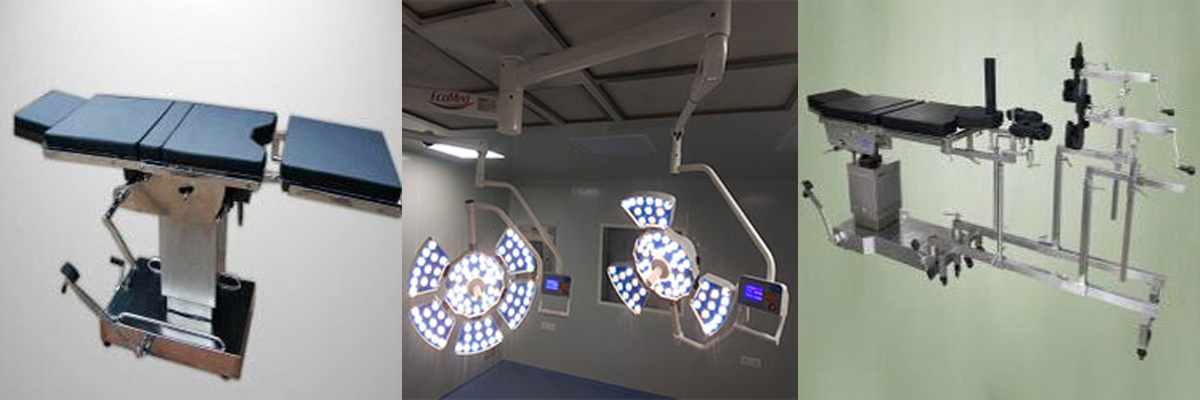Operation Equipment

The operating theater is a bustling hive of activity, a place where skilled surgeons wield their expertise to mend broken bodies and give hope to the sick. But behind the brilliance of the medical professionals lies a critical component: the equipment. This post will explore the essential tools and machinery that make surgery possible, highlighting their crucial roles in ensuring safe and successful interventions.
1. Anesthesia Machine: The foundation of any surgery is a safe and controlled anesthesia. The anesthesia machine delivers anesthetic gases and oxygen, meticulously monitored for patient safety. It also includes ventilation systems, allowing control over breathing during the procedure. This vital piece of equipment keeps patients comfortable and pain-free while ensuring their vital functions remain stable.
2. Surgical Table: More than just a surface, the surgical table is a critical element in operating room ergonomics. Adjustable to various positions, it allows surgeons optimal access to the surgical site, facilitating precise movements and minimizing strain. Some tables even come with integrated imaging capabilities, allowing real-time monitoring during procedures.
3. Surgical Lights: Proper lighting is critical in the operating room, allowing surgeons to see every detail of the surgical field. Surgical lights provide high-intensity, shadow-free illumination, crucial for precision and accuracy during delicate procedures. Some modern lights even offer adjustable color temperature, enhancing visibility and reducing eye strain for surgeons.
4. Monitoring Equipment: Patient safety is paramount in the operating room. Monitoring equipment, ranging from ECG machines to pulse oximeters and blood pressure monitors, constantly tracks vital signs, alerting the team to any changes requiring immediate attention. This vigilance ensures patient stability throughout the surgery and facilitates prompt intervention if necessary.
5. Sterilization Equipment: Infection control is an absolute priority in operating rooms. Sterilization equipment, including autoclaves and sterilizers, ensures that all instruments and materials used in surgery are free from harmful microorganisms. This process is essential for preventing post-operative infections and ensuring patient safety.
6. Surgical Instruments: The tools of the trade! From scalpels and forceps to clamps and sutures, each surgical instrument serves a specific purpose, meticulously crafted for precision and durability. These instruments are carefully sterilized and organized, allowing surgeons quick and easy access throughout the procedure.
7. Imaging Equipment: Depending on the type of surgery, imaging equipment like ultrasound machines, X-ray machines, or intraoperative endoscopes can be critical. These technologies offer real-time visualization of the surgical field, allowing for more informed decisions and minimizing potential complications.
Beyond the Basics: The operating room is constantly evolving, with new technology continually enhancing surgical capabilities. Robotic arms, laser technology, and advanced imaging techniques are becoming increasingly integrated, pushing the boundaries of surgical precision and patient outcomes.
The Importance of Equipment: It’s easy to focus on the surgeon’s skill and expertise, but it’s essential to remember that the equipment they use plays a vital role in achieving successful outcomes. These seemingly mundane machines are the unsung heroes of the operating room, ensuring patient safety, facilitating surgical procedures, and ultimately, saving lives.







